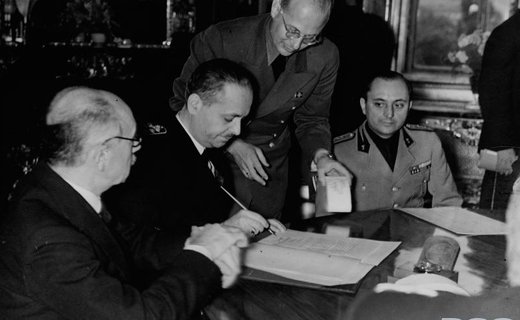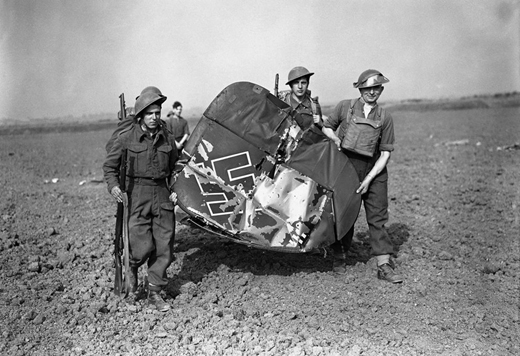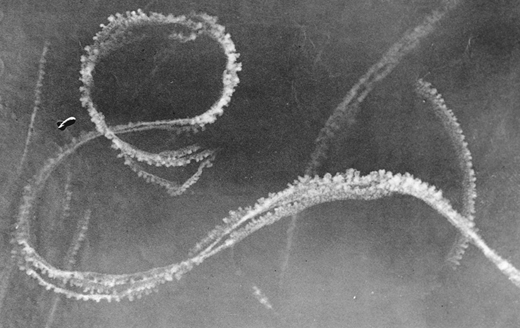Air Operations, Europe
There is an RAF night raid in Berlin, the first of 9 such in September.
[Atlantic
The U.S. begins the implementation of the occupation of naval and air bases in the Bahamas, Bermuda, British Guiana, Jamaica, St Lucia, Trinidad and Newfoundland. This will be the beginning of a 99-year lease which was received in exchange for 50 old destroyers.
[Axis Diplomacy
Under strong Axis pressure and in accord with the decision made by Ribbentrop and Ciano in Vienna on August 30, the 'Vienna Award' is put into effect. By terms of this agreement, Rumania is forced to cede to Hungary a large part of northern Transylvania which is populated mostly by the Hungarian Székely people. In addition to this area, and in spite of protests from the Rumanian government, a huge strip of territory populated by three million Rumanians is also surrendered to the Hungarians. Included in this area are the cities of Cluj and Oradea-Mare.
Hungarian Foreign Minister István Csáky |
 |
Battle of Britain
Day 56
Weather - Generally fine and warm over most areas. Some cloud and drizzle expected in the North with haze in the Channel.
Combat - The main raid of the day is just after 0930hrs by Do-17's and Me-110's, which successfully bombs the airfield at North Weald, causing considerable damage, along with attacks on the airfields at Debden and Hornchurch. Although R.A.F. fighters can not prevent the bombers reaching their target, they form up over Essex and Kent to meet the raiders on their return journey. Large dogfights spread across the area for nearly an hour, involving Hurricanes of No: 1, 17, 46, 249, 257, 303 (Polish) and 310 (Czech) Squadrons and Spitfires of No: 19 and 603 Squadrons.
At about 1130hrs a small raid is plotted approaching Deal that turns back, not before bombs have been dropped on Manston airfield. Other small raids are reported around the coast off the Isle of Wight, South West and off Liverpool, which are mainly reconnaissance.
During the afternoon, at about 1430hrs, another raid is plotted approaching Dover that is engaged by Hurricanes of No: 249 and 303 (Polish) Squadrons before turning back to France.
During the night, heavy bombing continues on Liverpool with further attacks on areas of South Wales and Kent. Mines are dropped along the south coast, off Aberdeen and the Thames Estuary.
Tail of a Messerschmitt Me-110 |
 |
R.A.F. Losses: 26 aircraft damaged or destroyed, 5 pilots killed or missing and 6 wounded.
Luftwaffe Losses: 31 aircraft damaged or destroyed, 33 pilots and aircrew killed or missing and 6 wounded.
NOTE: Losses include non-combat patrols and accidents.
Condensation Trails from Fighters |
 |
Battle of the Atlantic
- U-60 sinks the British steamer Ulva (1401t) 180 miles west-northwest of Inistrahull with the loss of 3 crewmen. 17 survivors are landed in the Hebrides.
- The Norwegian steamer Tropic Sea (5781t), captured by German armed merchant cruiser Orion on 18 May 1940, is scuttled when intercepted by the British submarine Truant in the Bay of Biscay. The survivors, including the crew from British steamer Haxby sunk by the Orion, are picked up by the submarine. 21 survivors are landed at Corunna. 10 survivors are picked up by a flying boat.
Germany, Planning
The operational orders for the invasion of Britain are issued. It is confirmed that the decision to go will be taken 10 days before the invasion is to take place. S-Day is now scheduled for September 21.
The Sealion plan now provides for elements of 11 divisions to make the assault. Two airborne divisions are to be sent in at once, but the other nine will start 6700 strong and will only reach full strength after several days. About 250 tanks are to accompany the assault. Four divisions of the Sixteenth Army with airborne support are to land near Folkestone, two of the Ninth Army, also with airborne support, at Brighton. These beachheads will not be mutually supporting in the early stages.
At this time the defending British forces have only made a partial recovery from the equipment losses at Dunkirk. There are perhaps four divisions fully equipped and about eight more in a reasonable state. In addition, there are various mobile brigade groups. There are about 350 cruiser and heavy tanks in the country and about 500 antitank guns.
[